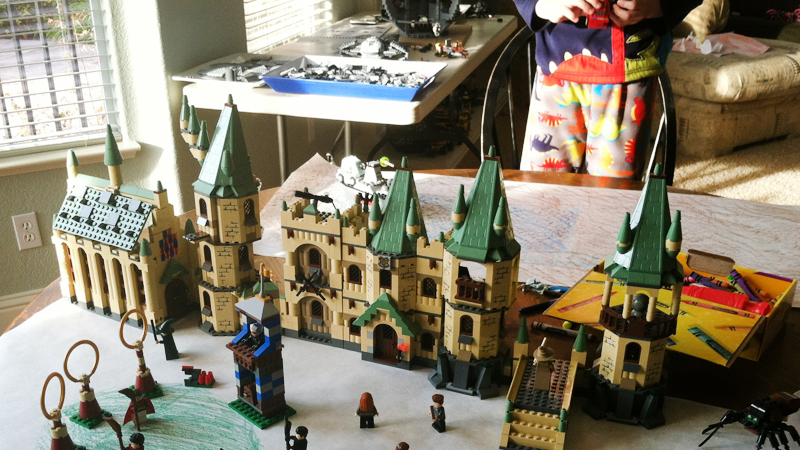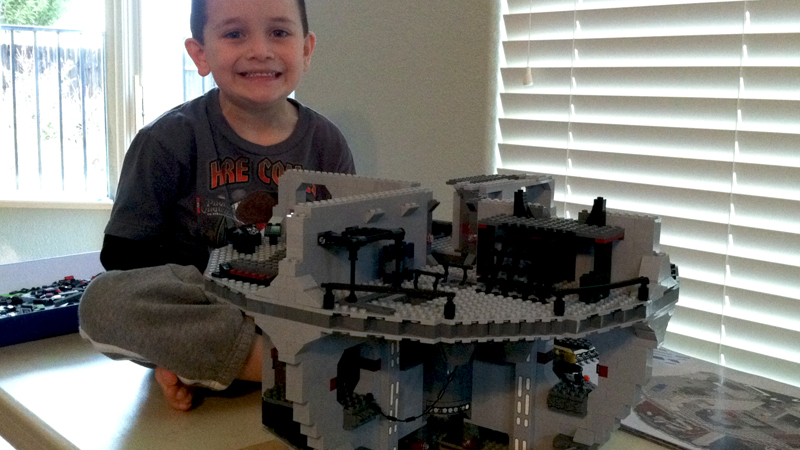
At one point it was my husband, Brian’s brilliant idea to teach our kids to never take no for an answer, but to instead negotiate for what they want if they first receive a no answer — or to come to the table with a backup plan in place when asking for something they really want.
It sounded like a great idea to me.
Why shouldn’t we teach our kids to negotiate for what they want? Why shouldn’t they learn to plan ahead when asking for something and have an argument ready for why that answer should be yes? Or to have a backup plan ready? It is an important life skill, right?!
Teaching kids to negotiate
I rarely take no for an answer — especially at home, much to Brian’s dismay. I also advocate for business owners and entrepreneurs learning negotiation skills, as it helps during sales conversations, new client pitches, and in making asks of strategic partners and joint venture partners.
I have found negotiation skills to be hugely valuable to me in business — that’s how at age 24, I got a $10,000 bump in my salary, even when it only took me 18 hours a week to do my entire job.
Naturally, teaching our kids the art of negotiation made sense to me. The earlier they learn it and get comfortable with it, the better. Or so I thought…
When we first got started, and we would say no to something they wanted, we’d follow up our no with a, “Do you have a counter offer? A backup plan? Do you want to rethink how you’re asking and come back?” And the kids would go away, huddle up, whisper a bunch, and then come back with a new ask.
Many times I could hear them whispering and planning their next plan of attack — their sibling banter, brainstorming, and logic just cracked me up.
Sometimes they would earn a yes on the second try. Like when they came in my office, asking, “Mom, can we have some cookies?” and my answer was no. But after lots of whispers in the hallway, they reframed their ask to, “Mom, after we eat some carrots and yogurt, can we have some cookies?” — and I changed my answer to yes.
Sometimes they earned a yes just based on their effort to try again — and some of the negotiations were pretty funny.
Other times, it took several tries and tough negotiations. Like when they wanted to make brownies, but eat the batter without actually making any brownies. For that we negotiated some room cleaning, play room cleaning, some vegetable eating, and some batter sharing with me.
At the time, my kids were in preschool and second grade — still young enough to make negotiation a natural skill and it worked like a charm. They learned very quickly that they could pretty much get anything they want with the right approach for the ask. (Plus, it helps that they never really asked for anything outrageous or naughty or bad.)
Until My Boy Hit Kindergarten. Then Everything Changed.
That’s when their negotiation skills and backup plans began to work against us.
We were getting ready to visit Santa at the mall and I told the kids to think about what they wanted Santa to bring them for Christmas. Once we were in the car, I asked them what they were going to ask Santa for. Carter responded with, “The Lego Death Star.”
I choked for a second and just about died. The Lego Death Star. Are you kidding?! That Lego set is almost 4,000 pieces, rated for 14+, and is $400. I thought for a minute, pointed out that the Lego Death Star was the most expensive set available at $400, and asked if he had a backup plan.
“No. I don’t need one.”
Wait, what? I mentioned how many cool toys there were to choose from and that there were several other things he could ask Santa for…
“It’s okay mom. I’ll ask you for those things. I’m asking Santa for the Lego Death Star because Santa is Magic and Santa doesn’t need money.”
Santa Doesn’t Need Money
At that point I had nothing. I was without words. He won.
The kid used our own parenting against us without even knowing it. He thought about what he wanted, planned out what he would ask Santa for and what he would ask us for based on the size of the present, and had an argument ready for why he should get it. I immediately knew we were screwed.
We went to the mall, he asked Santa for it, and on the way home, I called Brian, told him the story, and we both came to the same conclusion:
We were going to have to buy the Lego Death Star. Crap.

At least two good things came out of being forced into dropping $400 on one single Christmas present we weren’t even going to get credit for.
FIRST: My boy FREAKED OUT on Christmas morning when he unwrapped the Lego Death Star box. He was so excited, he didn’t want to open any other presents and just wanted to open the box and put together the minifigures. He was elated.
Then he looked us with a huge smile on his face and said, “See, Santa doesn’t need money!”
Yeah. Sure kid. I’m willing to let Santa have the credit for now because I love you and I want you to believe for as long as possible. So let’s just go with this — and not think about next Christmas.
SECOND: All four of us collect Legos and we all asked for multiple Lego sets for Christmas. We ended up dropping so much cash at the Lego Store that we got invited to a special in-store VIP only event, and got free Lego gifts mailed to us — which is a close to baller status as I think I have ever been.

Now, you may be thinking the same thing Brian and I were: Isn’t he going to struggle putting this enormous and complicated Lego set together? I mean 4,000 pieces, almost entirely in shades of grey, was going to tough. Heck, the instruction book was so big, it came spiral bound!
Brian — who also collects Star Wars Legos — was excited to add this to our collection and wanted to help build it. But my boy wanted no help. He wanted to do it himself. So we set up a six-foot, plastic, folding table in our family room that would act as his workspace.
Every night he’d work on it, following the instructions step-by-step, and putting together more and more of the set each night. Then every night after he went to bed, Brian would go through the instructions step-by-step, checking his work.
After almost an entire month, the Lego Death Star was finished and we moved it to his room, where he could play with it. Three years later, it is still in his room as a trophy of his hard work and a reminder of his first giant Lego set he did all by himself.

Negotiation Becomes Second Nature
What this experience did do however, was teach both of my kids nothing is ever really a no, and that with the right planning and strategy, you can eventually get anything you want.
It may be a not right now, or a not in this context, or a not how you’re currently asking, or a not from this person. But it’s not a no — yet, not until you’ve tried changing your approach, reframing your questions, offering a deal, or considering a backup plan.
Today they don’t even think about it as negotiating.
Most of the time they don’t even have to ask for things multiple times because they come to the table prepared. Now I hear questions like:
- I just finished a smoothie with spinach, almonds, banana, and berries. Can I have cookies now?
- My bedroom and the playroom are both clean. Can I have a friend spend the night?
- I finished all of my homework and did my reading. Can I go outside and play?
- Can I stay up as late as I want? We have no plans tomorrow and it’s not a school day or a work day.
- We have a dance on Friday and it’s space themed. I figure I can wear my shorts and my strappy black sandals, and I have a top that sort of fits the theme, but a new top would super awesome and there’s a huge sale at my favorite store right now…
As you can see, now they come to every ask with a strategy. They think about it what they want, they anticipate what I may say or what conditions I may have, they are proactive about combating any potential obstacles, and then they approach us with an ask.
And to be honest, they now almost always get a yes.
Half the time I can’t even think of a good reason not to say yes. They are outsmarting us on a regular basis with their rationale. And while at times it is frustrating, I wouldn’t have it any other way — even if sometimes I don’t like it.
Teaching negotiation skills to children early on, gives them the power and skills to ask for what they want with confidence because they know how to prepare for the ask.
Understanding Your Audience
They key however, is to also understand your audience when negotiating.
Any time I an negotiating for something I want, or making a big ask, I first evaluate who my opponent is. Who I am asking something of. Is it a client? Is it a superior? Is it a friend or family? Someone I know well or just a little? Is it someone who has more to lose or more to gain? And, you need to know what is important to them?
When you understand your audience, you have more power in how you approach the situation.
We found that for kids, understanding your audience can also be VERY beneficial. It helps them know when NOT to negotiate and simply accept no as a final answer.
For example, after one uncomfortable day at school, I got an email from my daughter’s teacher about her not accepting no as an answer. That’s when we had to sit the kids down and explain to them that sometimes, our family rules and how we do things in our house, don’t work in places like school.
While we want to them to continue to ask and to fight smartly, strategically, and politely for what they want at home, at school they have to do what an adult says and no means no. At karate, at dance, and at soccer, they also have to do what their coach says and no means no.
If they can master the art of understanding their audience and strategically asking for what they want, they are going to be unstoppable!
What about you?
Do your kids know how to negotiate or ask smartly to get a yes? Do you think we’re nuts? Has a Santa ask ever gotten you into a bind?
I’d love to hear your thoughts…